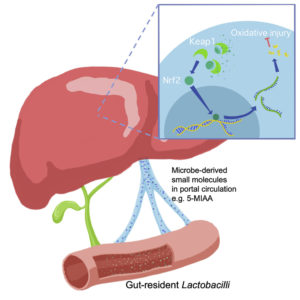A new discovery by Emory researchers in certain lung cancer patients could help improve patient outcomes before the cancer metastasizes.
The researchers in the renowned Marcus Laboratory identified that highly invasive leader cells have a specific cluster of mutations that are also found in non-small cell lung cancer patients. Leader cells play a dominant role in tumor progression, and the researchers discovered that patients with the mutations experienced poorer survival rates.
The findings mark the first leader cell mutation signature identified in patients and could prove key in teasing out high-risk patients, allowing oncologists to develop a treatment plan early on before the disease has progressed.
 “It has been a lot of fun to see the research go from the basic science side inside the lab to hopefully having an actual clinical impact,” says Brian Pedro, an MD/PhD student in Emory’s Medical Scientist Training Program. “Our data suggest that if you have one or more of these mutations, then we could potentially intervene early and improve patient outcomes.”
“It has been a lot of fun to see the research go from the basic science side inside the lab to hopefully having an actual clinical impact,” says Brian Pedro, an MD/PhD student in Emory’s Medical Scientist Training Program. “Our data suggest that if you have one or more of these mutations, then we could potentially intervene early and improve patient outcomes.”
Stopping leader cells before they metastasize has long been a goal of researchers at the Winship Cancer Institute. “That is what we strive for as researchers,” Pedro says. “We are optimistic that this could be a promising clinical tool.”
The findings were published in the American Cancer Society’s journal “Cancer.”
The researchers specifically found the novel mutation cluster on chromosome 16q and compared the survival rates of those who had the mutations with those who did not. The results showed the patients who had the mutations had poorer survival rates across all stages.
Pedro says more investigation is needed to figure out why the mutations lead to poorer outcomes. He adds that he hopes the mutation signature can prove useful for cancer types beyond lung cancer.
You can learn more from Pedro’s Tweetstorm.
Excited to share our new paper, published online today @JournalCancer (https://t.co/Mo0VlAsjJY). Briefly, we found that mutations identified from invasive leader cells correlate with poor survival in non-small cell #lungcancer patients. For those interested, here’s a #tweetorial:
— Brian Pedro (@brian_pedro) April 22, 2020







